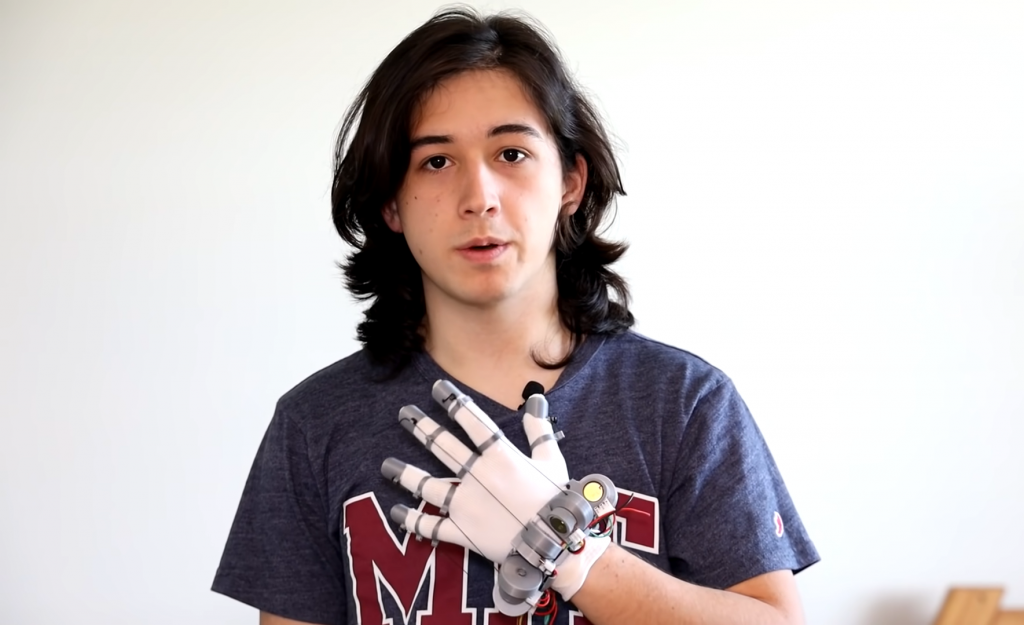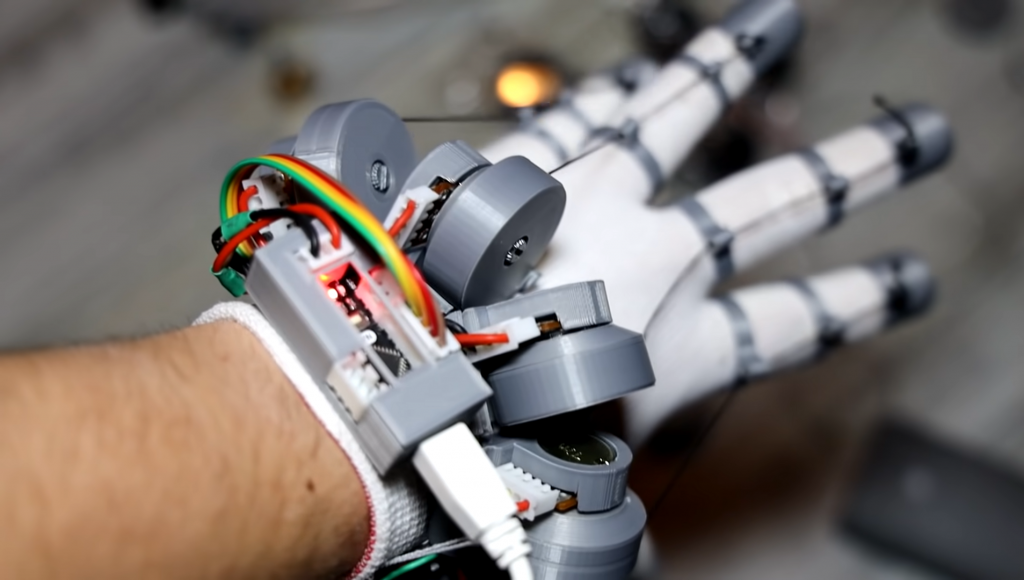A student YouTuber by the name of Lucas VRTech has designed and 3D printed a pair of low-cost finger tracking gloves for use in virtual reality.
Named LucidVR, the open-source gloves are currently on iteration three, and grant users the ability to precisely track their fingers without the use of dedicated VR controllers. Lucas is currently in the process of adding haptic feedback to the gloves, meaning they will enable users to feel virtual objects as if they were really in their hands.
Tallying up all of the component and filament costs, the LucidVR project cost Lucas just $22 ($11 per hand). The devices have already been tested in a number of VR games such as Half Life Alyx and Pavlov VR, and they work like a charm.
Lucas, referring to the upcoming fourth iteration, explains, “The VR haptic glove I’m working toward creating is going to have both finger tracking and haptics, so that you can pick up an object and feel it in your hand.”

VR haptic gloves: a toy for the wealthy
The ability to pick a virtual object up and really feel it in the palm of your hand is the next step towards full immersion in VR. Companies such as VRgluv and HaptX are already in the process of developing such devices, but high costs make these products inaccessible to the average consumer. As such, they are often only used by enterprises for VR-based training purposes, rather than gaming and other recreational activities.
Lucas adds, “I’m obsessed with VR myself, and I really wanted that experience so I decided to just try to build some VR gloves on my own. This started as just a fun project for me to work on by myself but now it’s become a mission for me to help make VR haptic gloves affordable for the average consumer.”

How do they work?
There are a few different ways of tracking finger movements, but the simplest and most cost-effective way is to use strings. By attaching strings to your fingertips with 3D printed rings and finger caps, you can measure just how far a string is pulled, which can be translated to fist clenches and finger extensions. When it comes to haptic feedback, strings can also be used to pull back on your fingers, simulating the force of an object in your hand.
To measure these string pulls, Lucas used a potentiometer – the same thing you’d find under the volume knob of an electric guitar. Potentiometers change their electrical resistances based on how far the knob is turned, so they can be used to map these resistances to string pulls caused by finger movements.
The next step was to provide a counter-force for the fingers, to ensure the strings were always under constant tension and retracted back when the fists weren’t clenched. For this, Lucas quite simply used a set of retractable ID badge reels, which he found online for 30 cents each.
To tie it all together, the gloves are powered by a small Arduino microcontroller running a Python program. The program, developed by Lucas himself, takes the data from the potentiometers and translates it to a pair of virtual hands in VR. To track the position of the hands themselves, including their rotations, users can either use the cameras of an Oculus Quest 2 or additional accessories like a VIVE Tracker.
Lucas has open-sourced all of his work on the project, with help from Danwillm. All of the necessary STL files and driver code can be found on the LucidVR project page here.

Projects like LucidVR are what keep the open-source community alive and kicking in 3D printing. Last year, open-source 3D printing designer Johan Von Konow unveiled his own DIY project, a modular 3D printable MIDI synth. The LEET Synthesizer, as it’s called, is a fun project that can be built for a grand total of $6.
Elsewhere, a team of software engineers have previously released an open-source AI software that automatically pauses failed FDM prints. The Spaghetti Detective utilizes the webcam of a printer or home computer to detect when a print job has gone wrong and started extruding ‘spaghetti’, interrupting the process and alerting the user through an email or text message.
Subscribe to the 3D Printing Industry newsletter for the latest news in additive manufacturing. You can also stay connected by following us on Twitter and liking us on Facebook.
Looking for a career in additive manufacturing? Visit 3D Printing Jobs for a selection of roles in the industry.
Featured image shows Lucas and his 3D printed VR glove. Photo via Lucas VRTech.


